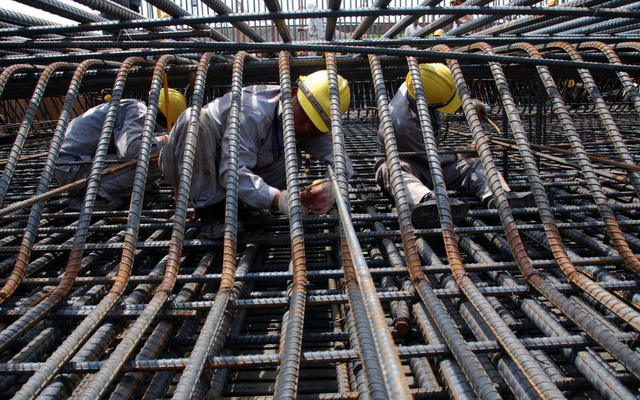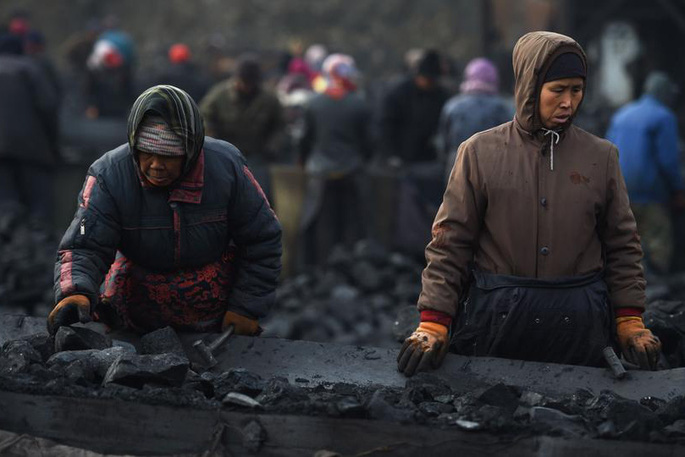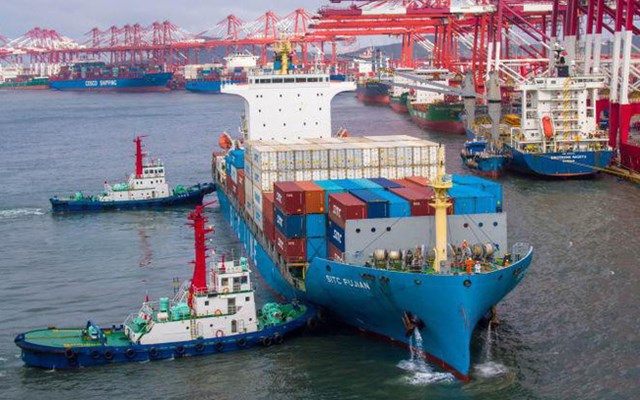
The image of a Chinese seaport that is congested and ships unable to navigate is causing a stir on the world’s social networking platforms.
The information that China’s seaports are congested is not accurate
Recently, a photo that has been widely circulated on many world social networking platforms such as Twitter, LinkedIn shows China’s coastline densely covered with small dots of different colors. According to the description, each small dot in the image represents a ship in a long line to enter the port. The reason for this “congestion”, according to world network users, is due to the impact of China’s current Covid-19 epidemic prevention and control policy.


However, according to The Paper, a subsidiary of the Oriental Morning News under the Propaganda Department of the Shanghai Municipal Party Committee, the photo posted online lacks specific image source information, but compares this photo with a screenshot. Vessel positioning information in real time in the “standard map” mode of the MarineTraffic marine information services software, can be seen: Both pictures whether in terms of the appearance of the map or the design of the vessels. Ship navigation symbols are all very similar.
The Chinese newspaper said that, from the outside appearance, the photo spread on the world’s social networking platforms is likely a screenshot from MarineTraffic.

Comparison of photos circulating online (left) and photos of MarineTraffic (right).
As a professional real-time vessel tracking software, MarineTraffic categorizes the vehicles within the scope of monitoring by function of use as passenger vessels (passenger vessels), cargo vessels (cargo vessels), tankers, high speed craft, tugs, yachts, fishing boats, unspecified ships, navigation aids ( navigation aids) with distinct colors of blue, green, red, yellow, blue, magenta, orange, black and white and lotus pink, respectively.

MarineTraffic relies on the function used to distinguish the types of vessels.
However, the pictures on the internet do not distinguish the types of ships, but also show all things related to water transport, even buoys, local ships carrying cement along the river, fishing boats, ships port tourism…objects that are not directly related are also shown in the photo and are used to create an atmosphere of “traffic jams at sea near Chinese ports”, which is clearly misleading.
What is the actual situation of China’s seaports?
Take the example of China’s seaport situation on the afternoon of May 6. After removing ships, navigational aids… not related to shipping, it can be seen that the “traffic congestion” situation near Chinese ports has improved significantly.
But at the same time, the number of cargo ships and oil tankers near China’s ports is still very crowded, is this a situation that only happened after the domestic epidemic situation in China re-emerged earlier this year? now?

The image shows the distribution of all types of ships near Chinese ports displayed on MarineTraffic software (left) and the image only shows the distribution of cargo ships and tankers near Chinese ports (including shipping inland waterways) is displayed. Time to take photos: 16:05 on May 6, 2022.
On January 24, 2021 (Beijing time), the Twitter account man_integrated posted a photo taken from MarineTraffic, showing the real-time distribution of vessels in several Chinese seaports.

Man_integrated’s photo was taken on January 24, 2021.
Comparing this photo with the recent photo that caused a stir, it can be seen that there is no significant difference in the distribution of boats between the times – even in early 2021 when the epidemic situation in China is similar. Relatively stable, the distribution of cargo ships near China is also very dense. This means that the presence of a large number of ships near Chinese ports is a relatively normal situation, not a “special sight” exaggerated by netizens.
The Global Port Development Report 2021 published by the Shanghai International Shipping Research Center shows that in the ranking of the world’s top 50 seaports based on cargo clearance, Chinese ports account for 28 position (including Hong Kong, China) and in the top 10 ports, there are 8 ports in China.
In February 2022, the Ministry of Transport of China announced, the total volume of goods cleared through seaports in China in 2021 will reach 15.55 billion tons, up 6.8% over the same period last year. 2020. According to a report by People’s Daily in October 2021, China’s seaport customs clearance volume in 2020 will reach 14.55 billion tons, ranking first in the world at that time.
So does the dense distribution of cargo ships at Chinese ports cause traffic jams? Take the port of Shanghai as an example. According to an article published by Freightwaves (USA) on April 21, 2022, the Covid-19 pandemic that broke out in Shanghai did not cause significant vessel congestion near the port of Shanghai. Data provider eeSea, which uses a vessel navigation system to calculate congestion rates found that waiting containers around the port of Shanghai and the nearby ports of Zhushan-Ningbo have increased since April but the level is not special.
According to eeSea, from late February to early March, ships near Shanghai port accounted for 16% of the total number of ships waiting or docking. By mid-April, that percentage had risen to 47 percent. However, the head of eeSea said that similar rates of congestion also occurred in July and September 2021, and this increase in data is not “dramatic” amid the global pandemic. If comparing the number of ships waiting off Shanghai and Ningbo in mid-April with the level at these ports in September last year, the situation this year is cooler than last year.
According to data from MarineTraffic, in the 17th week of 2022 (April 25-1/5), the average stopping time of cargo ships near Shanghai port is 2.3 days and the time in port is 0.8 day. The Wenhui Bao (Shanghai) newspaper on May 2 reported that during the current epidemic, to ensure the smooth operation of various port functions, Shanghai Port has deployed more than 20,000 workers to work at the port. . Currently, containers can operate at the port within an average of 36 hours after landing.

Screenshot of average waiting time and port time of cargo ships near Shanghai port over the past 9 weeks, displayed by MarineTraffic software.
Therefore, according to the Chinese newspaper, based on the above information, it can be seen that, if there is a lack of comparison and only maps of ship navigation information are used without context, the information “China’s ports are full of ships.” and cannot enter the port due to the country’s anti-epidemic policy” is incorrect.
T&G Import-Export Joint Stock Company
Address: 352 Hue Street, Le Dai Hanh Ward, Hai Ba Trung District, Hanoi
Hotline: 02473010868
Email: hrm@tginterjsc.com
Website: http://tgimportexport.com


















